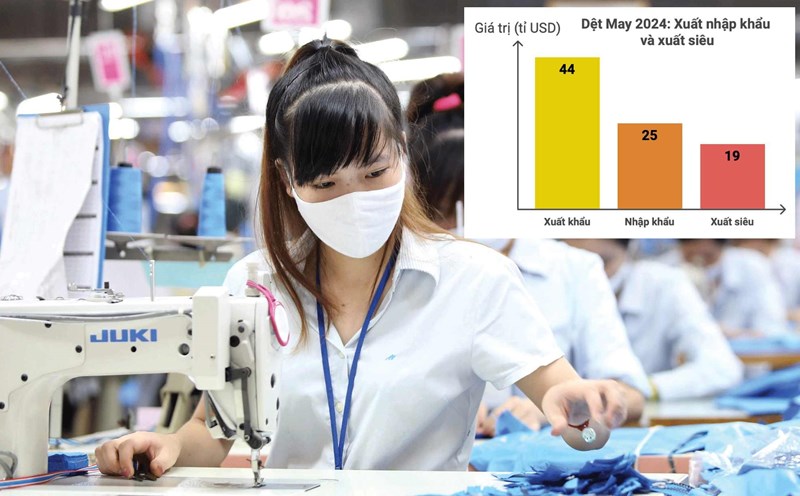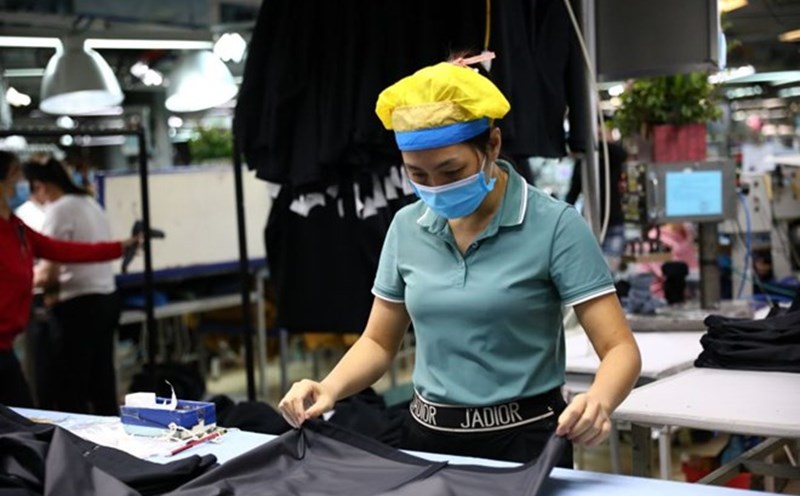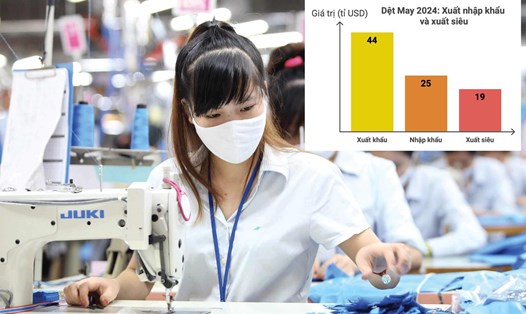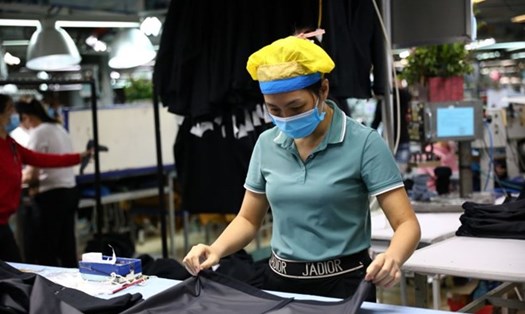At the “Textile and Footwear Enterprise Connection Workshop”, organized by the Southern Industrial Development Technical Support Center (IDCS) - Department of Industry (Ministry of Industry and Trade) in coordination with relevant units, Mr. Le Xuan Tho - Acting Director of IDCS said that in the context of deep international integration and increasing market demands, businesses in the industry need to seek solutions to improve quality, increase supply chain value and expand cooperation opportunities.
“I expect that this will create more strong momentum for the sustainable development of the textile and footwear industry, as well as raise awareness of dual transformation - combining digital transformation and green transformation. This is an important bridge to help domestic and international enterprises establish sustainable cooperative relationships, optimize supply chains and increase product value,” said Mr. Le Xuan Tho.
According to statistics from the Vietnam Textile and Apparel Association (VITAS), 70% of more than 3,800 textile factories produce garment products, only 6% produce yarn, 17% produce fabric and 4% are dyeing facilities. Each year, Vietnam uses about 400,000 tons of cotton but only 3,000 tons are supplied by domestic supply chains, meaning that the domestic rate does not meet 1% of demand.
A representative of the Ho Chi Minh City Textile and Embroidery Association said that most of the raw materials for the textile industry are mainly imported from abroad. The textile industry in the whole country is stuck in the situation of exporting yarn and re-importing because the weaving and dyeing stages are still weak, forcing a large amount of raw materials to be imported for production. Currently, the production of supporting materials for the textile industry is only focused on low value-added stages such as buttons, plastic fasteners, thread, zippers, etc., while high value-added stages such as yarn, chemicals, dyeing aids, dyeing and printing, and fabric finishing still have to be imported. Even supporting technology machines and buttons must be imported because domestic products do not meet the requirements. Vietnamese garment exporting enterprises still produce by simple processing methods, lacking the ability to provide complete packages.
Therefore, the development of supporting industries for the textile and garment industry needs to be prioritized, attracting multinational corporations to invest in technology and capital, and promoting the formation of a system of supporting enterprises serving the textile and garment industry.
Textile and garment industry experts say that in order to increase self-sufficiency in input materials and reduce dependence on imports, in the long term, authorities need to improve policies for developing supporting industries, focusing right from the stage of supplying “green” raw materials to the stage of production and distribution. There must be a planning orientation for supporting industrial clusters with complete infrastructure, focusing on stages with clear competitive advantages to attract FDI investment.
Along with that, there is financial and expert support, promoting the effective role of trade counselors, to help the textile and garment industry participate more deeply in the global supply chain, including the supply chain of raw materials, thereby increasing the competitiveness of Vietnamese enterprises. Textile and garment enterprises themselves also need to change their long-term thinking about restructuring the supply chain, repositioning their position, not just simply processing stages.
Up to now, Vietnam's textile and garment industry has had about 7,000 enterprises and nearly 3 million workers, ranking in the Top 2 of domestic export industries. In the industry, 70% are garment enterprises, 6% are yarn, 17% are weaving, 4% are dyeing and finishing, and the remaining 3% are auxiliary units.











